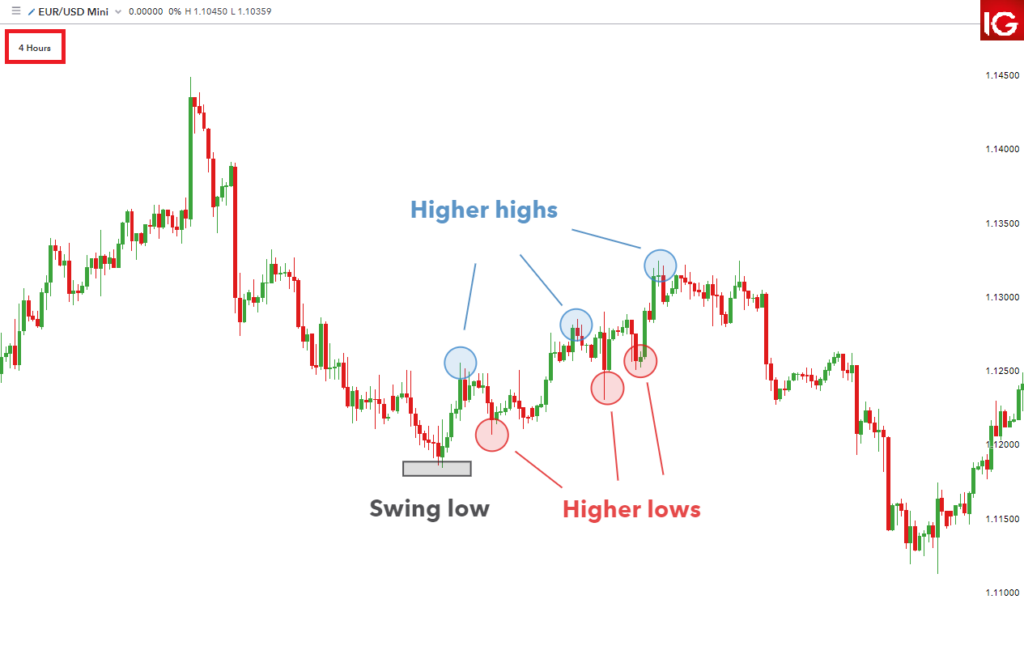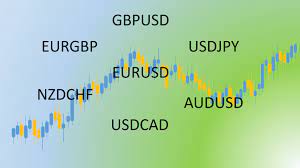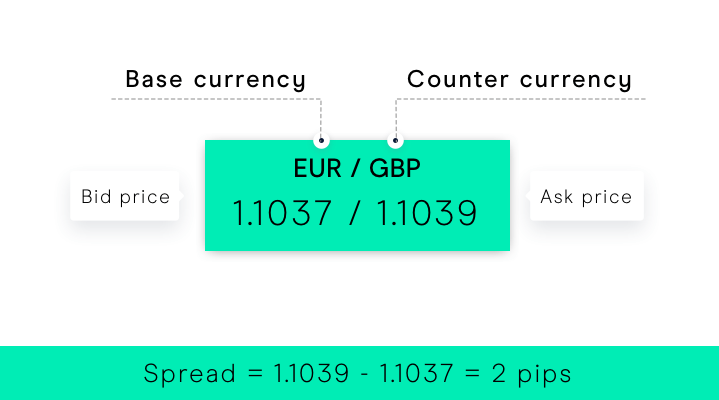Introduction to Forex Time Frames
In the fast-paced world of forex trading, understanding the concept of forex time frames is essential for devising effective trading strategies. Time frames refer to the duration over which price data is plotted on a chart, influencing the analysis and decision-making process of traders. This article explores the significance of time frames in forex trading, delves into different types of time frames, examines their advantages and disadvantages, and offers practical tips for selecting the optimal time frame for your trading style.
Understanding Time Frames in Forex Trading
Time frames play a pivotal role in forex trading as they determine the granularity of price data and the duration over which traders analyze market trends and patterns. Each time frame provides a unique perspective on market dynamics, allowing traders to identify trading opportunities and make informed decisions.
Different Types of Time Frames
Forex charts can be categorized into various time frames, ranging from short-term to long-term durations. Commonly used time frames include:
When it comes to forex trading, understanding the different types of time frames is essential for developing effective trading strategies. Let’s expand on the characteristics and suitability of each type of time frame:
Short Time Frames: Short time frames, such as 1-minute, 5-minute, and 15-minute charts, offer a detailed and granular view of price movements within a short duration. These time frames are favored by day traders and scalpers who aim to capitalize on intraday price fluctuations and execute multiple trades within a single trading session.
Advantages of Short Time Frames:
- Quick Analysis: Short time frames allow traders to analyze price movements rapidly and identify short-term trading opportunities.
- High Trading Frequency: Day traders and scalpers can execute multiple trades throughout the day, potentially increasing profitability.
- Precision Entries and Exits: Short time frames enable traders to enter and exit positions with precision, minimizing exposure to market volatility.
Disadvantages of Short Time Frames:
- Increased Market Noise: Short time frames are prone to market noise and false signals, making it challenging to distinguish genuine trading opportunities.
- Higher Transaction Costs: Due to the frequent trading activity, transaction costs such as spreads and commissions can accumulate, impacting overall profitability.
- Emotionally Taxing: The fast-paced nature of short time frame trading can lead to emotional stress and impulsive decision-making.
Medium Time Frames: Medium time frames, such as 1-hour, 4-hour, and daily charts, offer a balanced perspective between short-term fluctuations and long-term trends. These time frames are suitable for swing traders and position traders who seek to capture intermediate-term price movements and trends.
Advantages of Medium Time Frames:
- Clearer Trend Identification: Medium time frames provide a clearer view of market trends and direction compared to shorter time frames.
- Reduced Market Noise: Medium time frames filter out some of the market noise present in shorter time frames, resulting in more reliable trading signals.
- Flexibility: Swing traders and position traders have the flexibility to hold trades for several hours to days, accommodating various lifestyles and trading preferences.
Disadvantages of Medium Time Frames:
- Longer Holding Periods: Trades executed on medium time frames typically require longer holding periods compared to shorter time frame trades, requiring patience and discipline.
- Delayed Entry and Exit Signals: Medium time frames may lag behind shorter time frames in signaling entry and exit points, potentially missing out on optimal trade opportunities.
- Higher Capital Requirements: Position sizing and risk management may require larger capital allocations due to the longer duration of trades.
Long Time Frames: Long time frames, such as weekly and monthly charts, offer a broader outlook on market trends and price movements over an extended period. These time frames are favored by long-term investors and trend followers who seek to capitalize on major market trends and reversals.
Advantages of Long Time Frames:
- Comprehensive Market Analysis: Long time frames provide a comprehensive view of market trends, enabling traders to identify major trends and reversals.
- Lower Trading Frequency: Long-term investors and trend followers execute fewer trades, reducing transaction costs and emotional stress.
- Potential for Higher Profits: Riding major trends on long time frames can result in significant profits over time, especially during extended bull or bear markets.
Disadvantages of Long Time Frames:
- Longer Holding Periods: Trades executed on long time frames require patience and may entail holding positions for weeks, months, or even years.
- Reduced Precision: Long time frames may not provide precise entry and exit signals compared to shorter time frames, requiring traders to rely on broader market analysis.
- Psychological Challenges: Holding positions for extended periods can test traders’ emotional resilience, especially during periods of market volatility and drawdowns.
In conclusion, each type of time frame offers unique advantages and disadvantages, catering to different trading styles and objectives. Traders should carefully consider their risk tolerance, time commitment, and market preferences when selecting the most suitable time frame for their trading strategies. By understanding the characteristics of each time frame and adapting their approach accordingly, traders can enhance their trading performance and achieve their investment goals in the dynamic world of forex trading.
Advantages and Disadvantages of Short Time Frames
Advantages of Short Time Frames:
- Quick Identification of Short-Term Trading Opportunities:
Short time frames, such as 1-minute, 5-minute, and 15-minute charts, provide traders with the ability to swiftly identify short-term trading opportunities. The rapid price movements observed in these time frames allow traders to spot potential entry and exit points in real-time, facilitating quick decision-making. - Ability to Capitalize on Intraday Price Fluctuations:
Traders who utilize short time frames can capitalize on intraday price fluctuations by executing multiple trades within a single trading session. These price fluctuations, driven by market sentiment, news events, and economic releases, present opportunities for traders to profit from short-term price movements. - Suitable for Traders with Limited Time for Analysis:
Short time frames are particularly well-suited for traders with limited time for analysis, such as part-time traders or those with other commitments. Since shorter time frames require less time for analysis compared to longer time frames, traders can effectively manage their trading activities alongside other responsibilities.
Disadvantages of Short Time Frames:
- Higher Susceptibility to Market Noise and False Signals:
One of the primary drawbacks of short time frames is their higher susceptibility to market noise and false signals. The frequent price fluctuations and smaller price movements observed in these time frames can result in misleading signals, leading to suboptimal trading decisions and potential losses. - Increased Trading Frequency, Leading to Higher Transaction Costs:
Trading on short time frames often entails higher trading frequency, as traders aim to capitalize on multiple short-term opportunities throughout the day. This increased trading activity can lead to higher transaction costs, including spreads, commissions, and slippage, which can erode trading profits over time. - Greater Emotional Stress Due to Rapid Price Movements:
Short time frames are characterized by rapid price movements and volatility, which can lead to greater emotional stress for traders. The fast-paced nature of trading on short time frames may trigger emotional responses such as fear, greed, and anxiety, potentially impairing traders’ decision-making abilities and leading to impulsive trading behavior.
In summary, while short time frames offer advantages such as quick identification of trading opportunities and suitability for traders with limited time, they also present challenges such as susceptibility to market noise, increased transaction costs, and greater emotional stress.
Traders should carefully weigh these factors and consider their trading objectives, risk tolerance, and time availability when selecting the most appropriate time frame for their trading strategies. Additionally, implementing risk management techniques and maintaining discipline can help mitigate the drawbacks associated with trading on short time frames.
Advantages and Disadvantages of Long Time Frames
Advantages of Long Time Frames:
- Clearer Depiction of Long-Term Trends and Market Sentiment:
Long time frames, such as weekly and monthly charts, provide traders with a clearer depiction of long-term trends and market sentiment. By analyzing price data over extended periods, traders can identify major trends and market cycles, enabling them to make more informed trading decisions and position themselves in alignment with the prevailing market direction. - Reduced Noise and False Signals, Leading to Higher Probability Trades:
Long time frames filter out much of the short-term noise and random price fluctuations present in shorter time frames. As a result, trading signals generated on long time frames tend to be more reliable and have a higher probability of success, as they are based on more significant price movements and trends rather than short-term market noise. - Lower Trading Frequency, Minimizing Transaction Costs and Emotional Stress:
Trading on long time frames typically involves lower trading frequency compared to shorter time frames. Traders executing fewer trades incur lower transaction costs, including spreads, commissions, and slippage, which can contribute to improved overall profitability. Additionally, the reduced trading frequency minimizes emotional stress associated with constantly monitoring the markets and making rapid trading decisions.
Disadvantages of Long Time Frames:
- Slower Response to Short-Term Price Fluctuations:
One of the drawbacks of long time frames is their slower response to short-term price fluctuations. Since long time frames encompass more significant periods of time, they may lag behind shorter time frames in identifying and reacting to short-term market movements. As a result, traders utilizing long time frames may miss out on opportunities to capitalize on rapid price changes. - Delayed Entry and Exit Signals Compared to Shorter Time Frames:
Trading signals generated on long time frames tend to occur less frequently and may take longer to develop compared to signals on shorter time frames. Consequently, traders relying on long time frames may experience delayed entry and exit signals, potentially leading to missed trading opportunities or suboptimal timing of trades. - Requires Patience and Discipline to Wait for Confirmatory Signals:
Trading on long time frames requires patience and discipline to wait for confirmatory signals and allow trades to unfold over extended periods. Unlike shorter time frames where trades may be executed more frequently, traders operating on long time frames must exercise patience and refrain from impulsive trading decisions based on short-term market fluctuations.
In conclusion, long time frames offer advantages such as clearer depiction of long-term trends, reduced noise, and lower trading frequency, but they also come with drawbacks such as slower response to short-term price movements, delayed signals, and the need for patience and discipline.
Traders should carefully consider these factors and align their trading strategies with their objectives, risk tolerance, and time preferences when selecting the most appropriate time frame for their trading activities. Additionally, implementing robust risk management practices can help mitigate the challenges associated with trading on long time frames.
Advantages and Disadvantages of Medium Time Frames
Advantages of Medium Time Frames:
- Balanced Perspective on Market Trends and Price Movements:
Medium time frames, such as 1-hour, 4-hour, and daily charts, provide traders with a balanced perspective on market trends and price movements. By analyzing price data over intermediate time periods, traders can capture both short-term fluctuations and long-term trends, allowing for a more comprehensive understanding of market dynamics. - Suitable for Traders Seeking a Compromise Between Short-Term and Long-Term Trading Strategies:
Medium time frames are well-suited for traders seeking a compromise between short-term and long-term trading strategies. These time frames offer sufficient granularity to capitalize on short-term trading opportunities while also providing a broader context for identifying and trading along with longer-term trends. - Reduced Susceptibility to Market Noise Compared to Shorter Time Frames:
Medium time frames filter out some of the market noise present in shorter time frames, resulting in fewer false signals and more reliable trading setups. By focusing on intermediate-term price movements, traders can avoid getting caught up in short-term fluctuations and make more informed trading decisions.
Disadvantages of Medium Time Frames:
- Potential for Missing Out on Short-Term Trading Opportunities:
One of the challenges of medium time frames is the potential for missing out on short-term trading opportunities. While these time frames offer a balance between short-term and long-term perspectives, traders may overlook rapid price movements and intraday trading opportunities present in shorter time frames. - Requires Disciplined Analysis to Identify Optimal Entry and Exit Points:
Trading on medium time frames requires disciplined analysis to identify optimal entry and exit points accurately. Traders must conduct thorough technical and fundamental analysis to confirm trading signals and avoid acting on impulse or emotion. - May Not Provide a Clear Trend Direction in Highly Volatile Markets:
In highly volatile markets, medium time frames may not always provide a clear trend direction, leading to ambiguity and uncertainty for traders. Rapid price swings and erratic market behavior can make it challenging to discern meaningful trends and establish reliable trading strategies.
In summary, medium time frames offer a balanced perspective on market trends and price movements, making them suitable for traders seeking a compromise between short-term and long-term trading strategies. While they reduce susceptibility to market noise compared to shorter time frames, traders must remain disciplined in their analysis and decision-making to navigate the challenges associated with trading on medium time frames effectively. Additionally, adapting trading strategies to market conditions and implementing robust risk management practices can help mitigate the drawbacks of medium time frame trading.
Finding the Optimal Time Frame for Your Trading Style
Selecting the optimal time frame depends on various factors, including your trading style, risk tolerance, and time commitment. Consider the following guidelines when choosing a time frame:
- Determine Your Trading Style: Are you a day trader, swing trader, or long-term investor? Align your time frame with your preferred trading style and objectives.
- Assess Your Risk Tolerance: Shorter time frames tend to be riskier due to increased volatility and market noise. If you have a low risk tolerance, consider longer time frames for more stable trading opportunities.
- Evaluate Your Time Commitment: Shorter time frames require more frequent monitoring and active involvement in trading, while longer time frames offer flexibility for traders with limited time availability.
Tips for Trading with Different Time Frames
Regardless of the time frame you choose, consider the following tips to enhance your trading success:
- Use Multiple Time Frame Analysis: Combine different time frames to gain a comprehensive view of market trends and confirm trading signals.
- Focus on Higher Time Frames for Confirmation: Use longer time frames to validate signals from shorter time frames, increasing the reliability of your trades.
- Adjust Risk Management Strategies: Adapt your risk management techniques based on the volatility and duration of your chosen time frame to protect capital and minimize losses.
- Stay Disciplined: Stick to your trading plan and avoid impulsive decisions, especially during periods of market volatility.
Common Mistakes to Avoid When Using Time Frames
While time frames can be valuable tools for traders, they can also lead to common mistakes if not used effectively. Avoid the following pitfalls:
- Overtrading: Trading excessively on shorter time frames can lead to impulsive decisions and increased transaction costs.
- Neglecting Higher Time Frames: Focusing solely on shorter time frames may result in overlooking broader market trends and significant price movements.
- Ignoring Market Context: Consider the overall market environment and fundamental factors when analyzing price data across different time frames.
The Impact of Time Frames on Technical Analysis
Time frames play a critical role in technical analysis as they influence the interpretation of chart patterns, indicators, and trend formations. Traders often use shorter time frames for tactical entry and exit points, while longer time frames provide context for identifying major trends and reversals.
Conclusion
In conclusion, mastering time frames is essential for successful forex trading. Understanding the nuances of different time frames, along with their advantages, disadvantages, and impact on technical analysis, can significantly enhance your trading performance. By selecting the optimal time frame that aligns with your trading style and objectives, employing effective risk management strategies, and staying disciplined in your approach, you can navigate the forex markets with confidence and achieve your investment goals.
Read our latest article on Forex vs Stocks
- FAQ: What are medium time frames in forex trading? Answer: Medium time frames, such as 1-hour, 4-hour, and daily charts, provide traders with a balanced perspective on market trends and price movements, offering a compromise between short-term and long-term trading strategies.
- FAQ: What advantages do medium time frames offer? Answer: Medium time frames offer a balanced perspective on market trends, making them suitable for traders seeking a compromise between short-term and long-term trading strategies. They also reduce susceptibility to market noise compared to shorter time frames.
- FAQ: How do medium time frames differ from short and long time frames? Answer: Medium time frames strike a balance between short and long time frames, offering a blend of short-term and long-term perspectives on market trends and price movements.
- FAQ: What challenges do traders face when using medium time frames? Answer: Traders using medium time frames may encounter challenges such as the potential for missing out on short-term trading opportunities and the need for disciplined analysis to identify optimal entry and exit points.
- FAQ: Are medium time frames suitable for all traders? Answer: Medium time frames are suitable for traders seeking a compromise between short-term and long-term trading strategies. However, they may not be ideal for traders with specific preferences for either short-term or long-term trading.
- FAQ: How can traders effectively utilize medium time frames? Answer: Traders can effectively utilize medium time frames by conducting thorough technical and fundamental analysis to confirm trading signals and avoid acting on impulse or emotion.
- FAQ: Do medium time frames provide clear trend direction in volatile markets? Answer: In highly volatile markets, medium time frames may not always provide a clear trend direction, leading to ambiguity and uncertainty for traders.
- FAQ: Can traders switch between different time frames? Answer: Yes, traders can switch between different time frames based on market conditions and trading objectives. It’s essential to adapt trading strategies accordingly to align with the selected time frame.
- FAQ: How do medium time frames compare to short time frames in terms of trading frequency? Answer: Medium time frames typically involve lower trading frequency compared to shorter time frames, reducing transaction costs and emotional stress for traders.
- FAQ: What risk management practices should traders employ when using medium time frames? Answer: Traders using medium time frames should implement robust risk management practices, including setting appropriate stop-loss and take-profit levels, to protect capital and minimize losses.
Click here to read more on Forex Time Frames





